Alongside Spawn and The Walking Dead, Mike Mignola's Hellboy is one of the most well-known creator-owned comics success stories of the past thirty years. Over the course of three decades, Mignola has accomplished the incredible feat of taking the bare-bones sketch of a character from a random doodle at comic convention and turning it into a bonafide franchise with an ever-expanding list of ongoing titles, trade paperbacks, omnibuses, short story collections, one of the best non-DC or Marvel comic book movie adaptations, and merchandise to its credit.
Mignola's success is in large part thanks to his abilities as a master storyteller with an impeccable sense of timing and structure, and his utterly unique artistic vision makes Hellboy comics stand out among its many competitors and imitators. The ongoing Hellboy series saw Mignola produce some of the finest issues of thought-provoking horror comics to date, the best of which merit careful consideration and all the praise that can be bestowed upon them.
7 Issue #1: Seed Of Destruction, Part 1
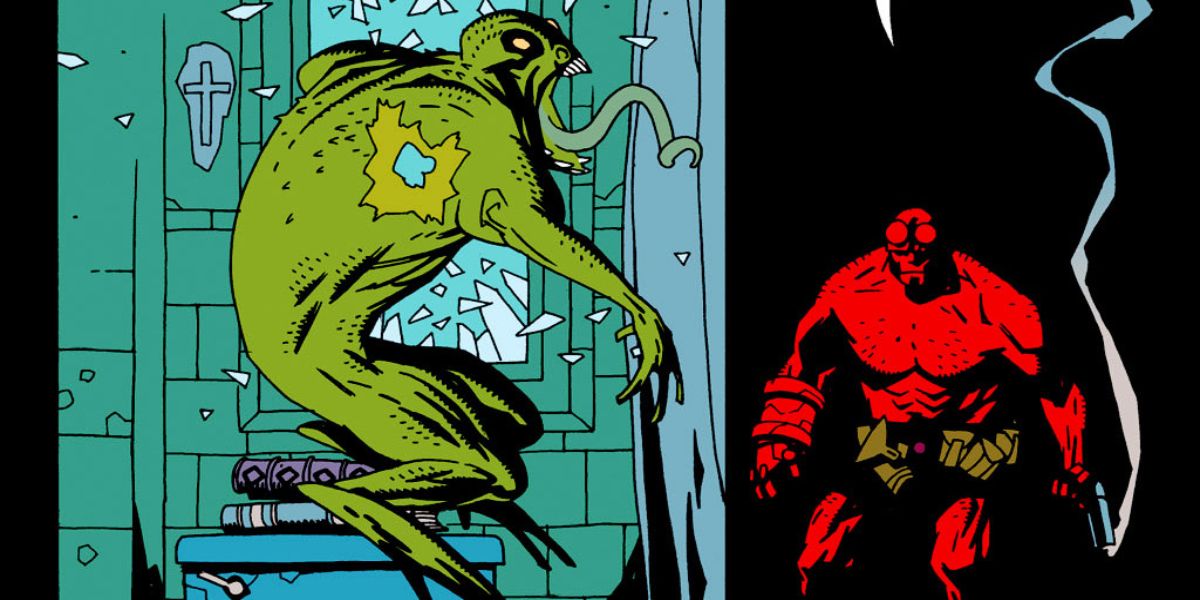
Mike Mignola's seminal creation came bursting onto the comics scene with Seed of Destruction in 1994 and was immediately acclaimed as a modern touchstone in horror comics–and reading issue #1, it's easy to see why. The use of striking primary colors set against drab, earthen tones and a black background creates an impeccable juxtaposition that makes the first four issues of the series jump off the page in a visceral way, commanding the attention of the reader.
At this early stage, the comic looked wildly different from the style and form Mignola would adopt decades later into writing the character, featuring extended sections of epistolary prose in the form of diary entries and artwork that appears slightly more detailed and intricately rendered than some of the later issues. Most importantly, issue #1's story introduced an otherworldly and epic origin for the title character while also establishing Hellboy's roguish charm.
6 Issues #12 & 13: Almost Colossus
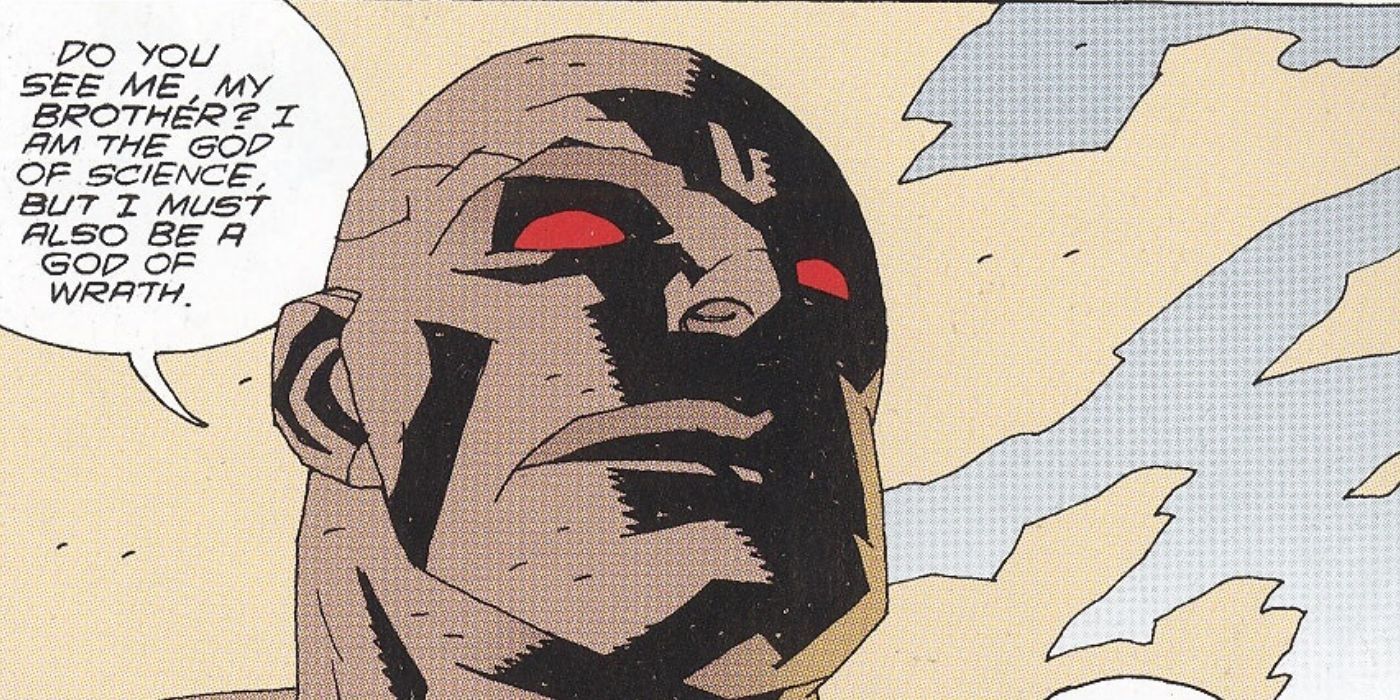
The third arc of the Hellboy series, Almost Colossus is responsible for the humanization (figuratively, not literally) and re-introduction of the greatest Hellboy hero fans have never heard of, Roger the Homunculus, who up until this issue had been cast solely as a rampaging monster bringing death to those around him. The two-issue story sees Roger explore the origins of his creation and his creator, encountering his power-mad brother along the way and teaming up with Hellboy and Abe Sapien to destroy an enormous, rampaging colossus inhabited by the spirit of his brother, who believes himself to be God.
In the process, Roger must confront the consequences of his animation at the hands of agent (and friend of Hellboy) Liz Sherman, who was killed in the encounter as he unwittingly robbed her of her pyrokinetic abilities. A beautiful tale of monstrous beings striving to overcome the circumstances of their inception and do right by their existence, Almost Colossus stands tall as one of the most heartfelt and philosophical arcs of the series.
5 Issues #15 & 16: Box Full Of Evil

Another two-issue arc in the vein of Almost Colossus, Box Full of Evil is a wickedly delightful and bite-sized escapade featuring an all too rare Hellboy/Abe Sapien team-up, as they investigate the theft of an odd set of objects–a pair of tongs and a mysterious box–from a house whose owner had no previous knowledge of their existence.
Mignola plays up the absurdist elements of horror fiction for comedic purposes and to hilarious effect throughout the two issues, which feature Hellboy jumping out of a window at one point to catch a demon in the form of a fly, and the unforgettable two lines of dialogue exchanged between Abe and Hellboy–"Is that a monkey?", "HE'S GOT A GUN!"–followed by a panel depicting an enraged chimp brandishing and discharging a revolver. One of the great "buddy cop" moments in the Hellboy saga, these two issues constitute one of the most enjoyable episodes in the series that readers find themselves coming back to again and again.
4 Into The Silent Sea
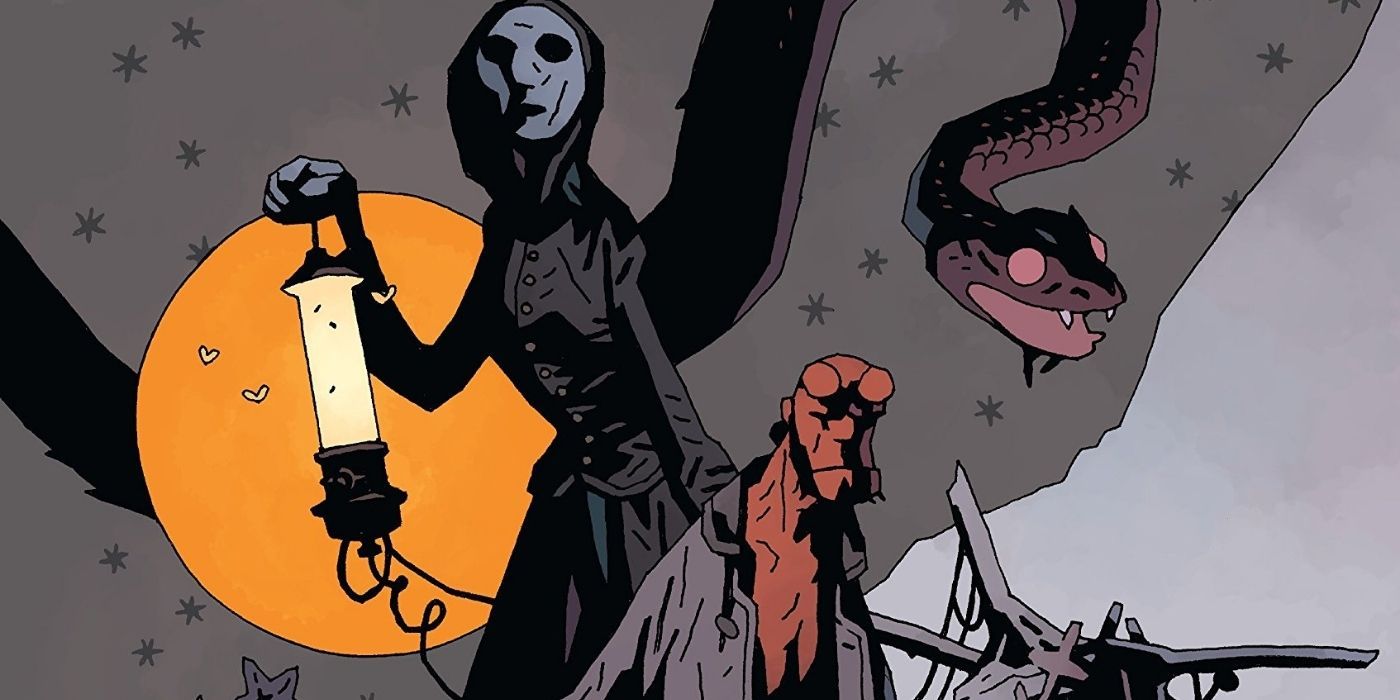
Though not strictly speaking a numbered issue of the central Hellboy title, Into The Silent Sea is nonetheless collected in several of the trade paperbacks and the omnibus editions as part of or an addendum to The Island story arc, making it an integral part of the canon. Mignola spins an enchanting high-seas fable replete with gnarled, nautical monsters, ghost ships, and several epigraphs and quotations from poems and sea shanties–most notably The Rime of the Ancient Mariner by Samuel Taylor Coleridge, which both closes and opens the issue.
The story is distinguished by its breathtaking artwork courtesy of Gary Gianni, whose meticulous, almost lithographic style is perfectly suited to the rendering of kelp-covered, decaying man-o-wars, swirling black seas underneath tempestuous grey skies, and all manner of period-accurate maritime paraphernalia–given a certain gravitas by the near-pastiche style of Gianni's art.
3 Issue #37: The Wild Hunt, Part 1
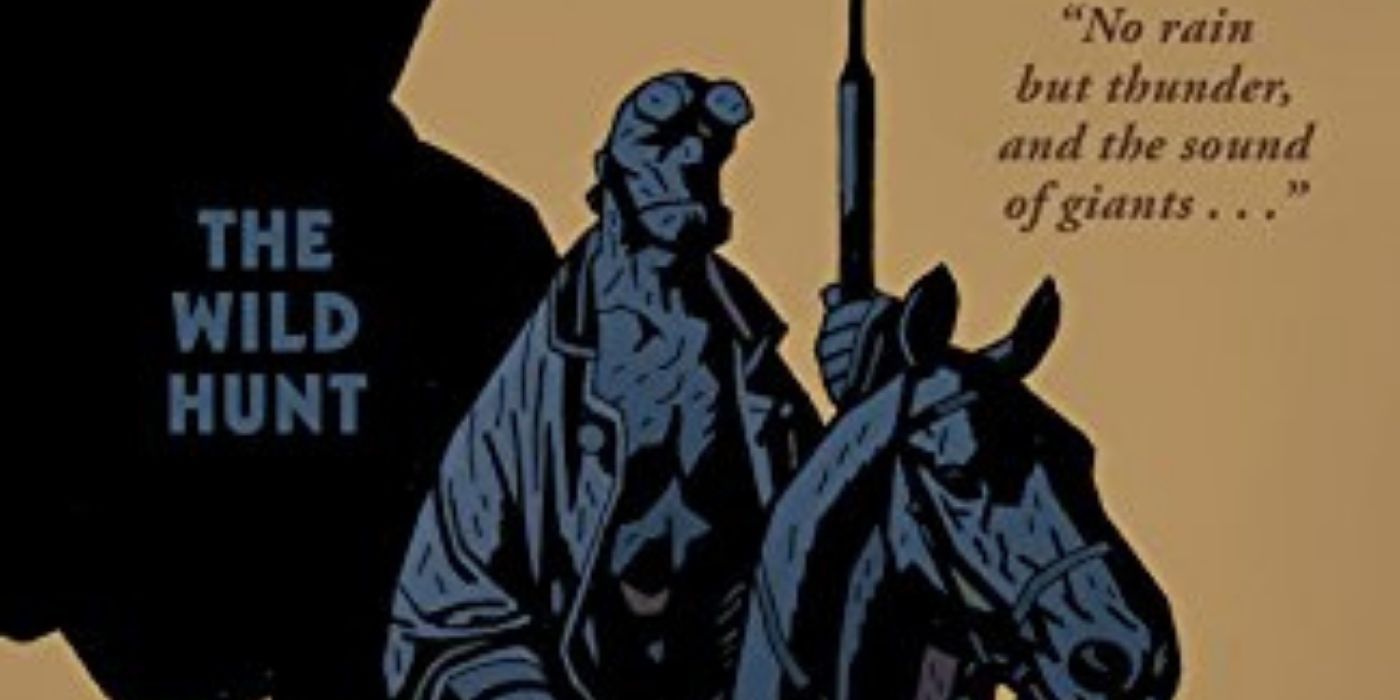
Marking the beginning of the end for Hellboy, this terrifying opening chapter of The Wild Hunt based on real folklore recaptures some of the sheer fun of the earlier issues not embroiled in schemes of cosmic magnitude. The issue, in fact, contains very little introduction of the central conflicts that will play out for the remainder of the story arc; instead, it sets up what is seemingly a short, self-contained tale about an underground order of English noblemen who convene periodically to hunt giants.
What makes this issue so great and original is the spellbinding imagery it evokes. From crusading English knights on horseback wearing deer heads as cowls to crumbling stone walls of 13th-century churches and candelabra-lit corridors of time-worn castles lined with taxidermied giant heads, artist Duncan Fegredo impeccably illustrates Hellboy's fantastical world of Lovecraftian monsters and medieval decadence.
2 Issue #43: The Wild Hunt, Part 7
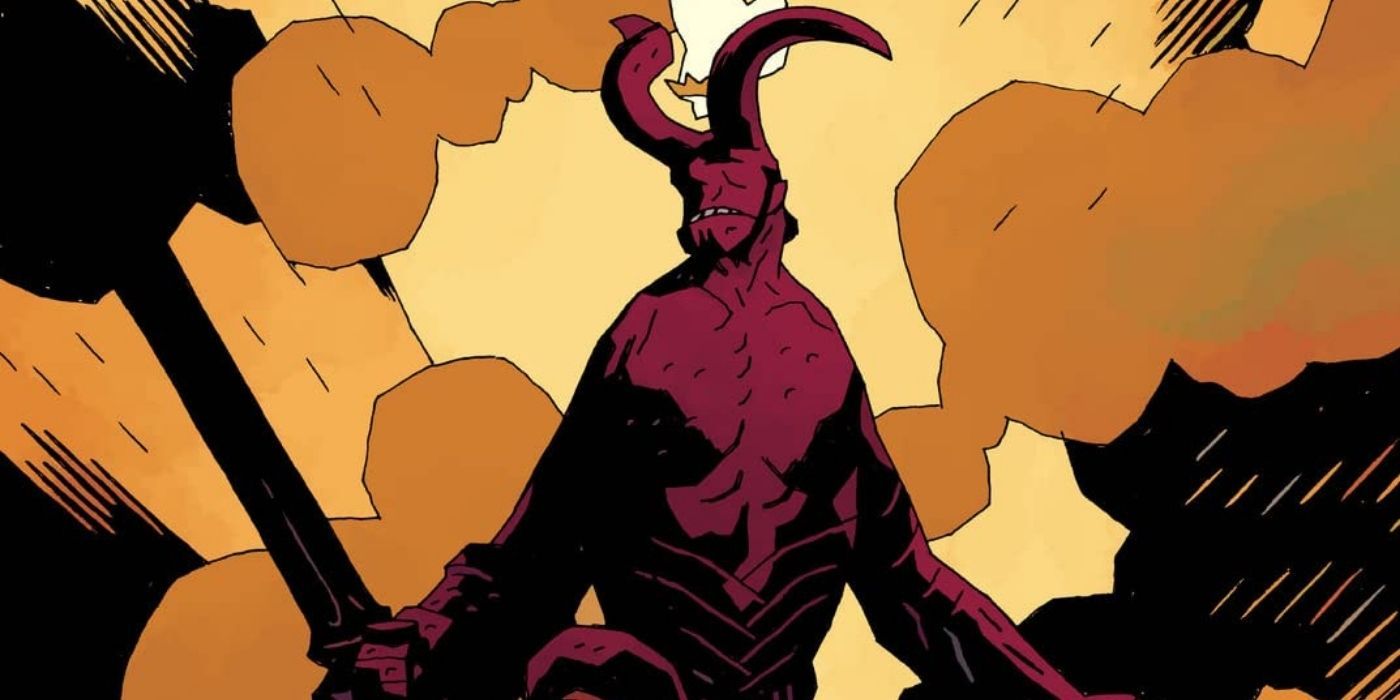
In the penultimate issue of The Wild Hunt story, chapter seven continues and elevates the comic's long-running themes of self-determination and rejection of destiny on the part of the title character. Hellboy #43 sees Hellboy grappling with the overwhelming responsibility of assuming the throne of England and leading a vast army into battle. Fearing that taking on the role of conquering hero will solidify his fate of becoming the prophesied apocalyptic destroyer Anung Un-Rama, the issue plays out as a brilliant evocation of Hellboy's inner struggle to resist his bloodthirsty nature and stave off a growing fear that he really is the monster people proclaim him to be.
Mignola uses poignant symbolism and visual parallelism throughout the text and brings this dichotomous inner conflict to a crescendo with a climactic battle between Hellboy and an imagined, hellish version of himself as king of the underworld, accidentally resulting in the tragic death (for a time) of his beloved friend Alice–underscoring the heavy toll that Hellboy's self-doubt can take on his closest allies.
1 Issue #55: The Fury, Part 3
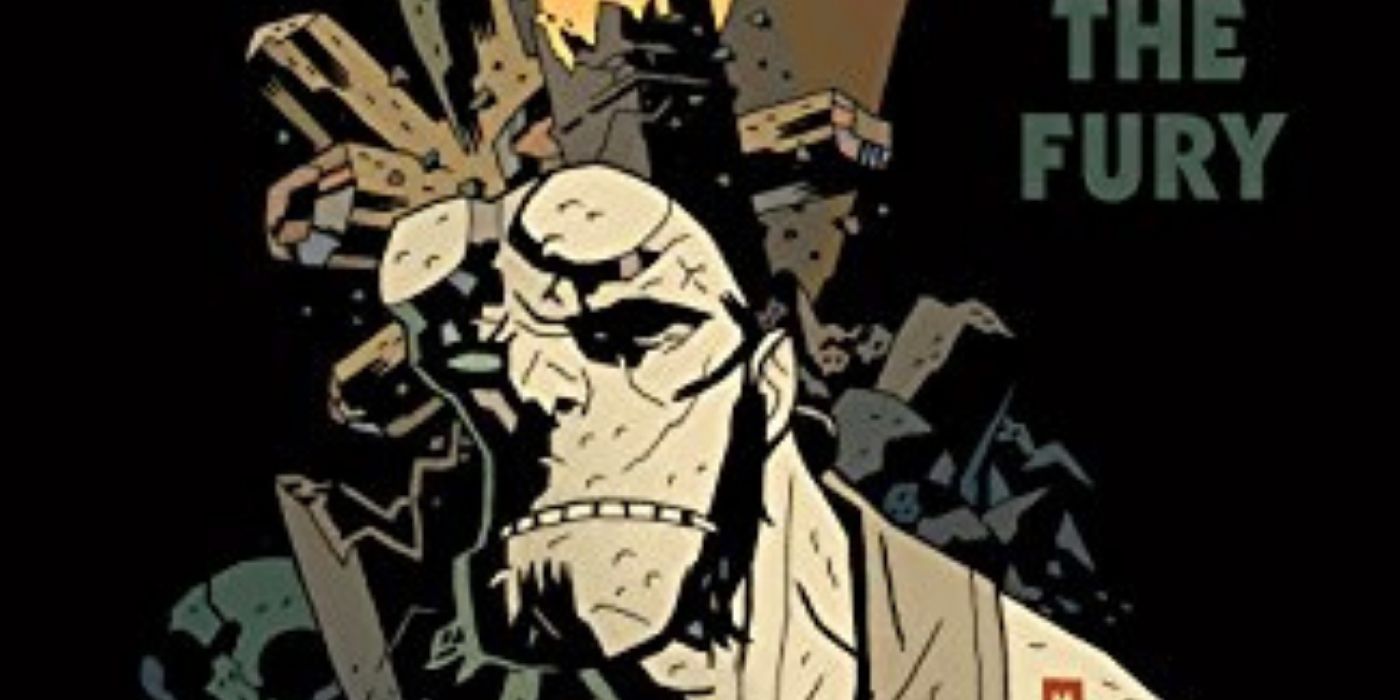
Though this final issue of the Storm and Fury story arc does deliver a colossal and visually dazzling Hellboy/dragon fight scene and several moments of grand-scale mythological excess, its most distinguished triumphs lie in its subdued and exquisite opening and closing pages. The opening page depicts a cataclysmic lightning storm devouring London, and a family huddled together in an embrace on their bedroom floor, purportedly sheltered from the destruction. The family is then subsequently burned alive as their house is struck by lightning, Fegredo rendering the moment in horrific and beautiful detail with the hugging skeletons stripped of all flesh and consumed by blue flame, set against text reading: "It's as it should be... I was in the beginning and shall be forever... time, the destroyer."
This reflection upon the nature of mortality and the fleetingness of existence is then brought to a powerful conclusion on the final page of the issue, which simply shows an old man wandering the smoldering ruins of a devastated London. In the final two panels, this man stumbles across a trio of blooming lilies sprouting from the base of a collapsed column, which perfectly realizes Mignola's contemplation of the cycle of death and rebirth as it initiated on the opening page.
from ScreenRant - Feed https://ift.tt/3CRRYRm

0 Comments